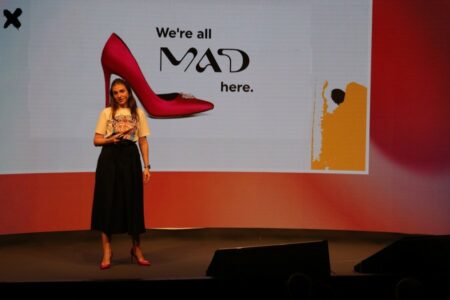Are Christmas bonuses key for healthy company culture? Probably not, but other tips and tricks will help you maintain a climate your employees will appreciate.
You might have heard about the US real estate company that has awarded 10 million dollars as 2019 holiday bonuses to its employees and made “grown men cry with joy”. But you don’t need millions to make people happy, engaged and, most importantly, to keep them in your company. Read this article to find out six measures you can take as of tomorrow to improve the workplace culture and employer engagement with little to zero financial investment.
Research from Nobel Prize winners Daniel Kahneman and Angus Deaton shows that once employees reach a certain financial goal at work, their happiness will not increase with further salary upgrades. In other words: after employees are satisfied with their monthly wage, their work engagement and the company culture becomes more important than money.
Let’s compare these figures: more than half of disengaged employees say that they are willing to leave their job for a 20% or less salary increase. However, when employees are engaged (feeling involved in the company, committed to its mission and enthusiastic about their work) leaving rates drop to 37%.
So how can managers achieve a company culture that makes their employees engaged, and, consequently, less likely to leave?

What is company culture?
Simply put, the company culture is a reflection of a company’s personality . It’s a complex concept, that includes how employees are treated, how they feel about working for the company, the vision they share, the emotional bonds that form with colleagues and leaders, the day to day atmosphere of the work environment. It’s the values that both management and people share and actively embrace when working together.
In more practical terms, if the reason for launching a business constitutes the “what”, the company culture constitutes the “how”. How are employees treated? How are the relations inside the company? How do employees interact with customers and what values do they convey through their manner, behaviour, and words?


Culture – an essential factor in the recruiting process
Company culture plays an essential role in retaining the best employees, but also in attracting top talent. Just like a good brand attracts clients for a company, the employer brand can attract the best human resource on the market. Companies now compete to be named “The best place to work”, in year-end lists and awards. They proudly display their Glassdoor review page, as job candidates place more trust in reviews from actual employees than the company’s PR discourse. While company culture may seem something that is only important “inside”, it is one of the most important assets that a company may have to promote itself “outside”.
Can company culture be managed?
Short answer, yes. Long answer – the company culture cannot be forced, artificially constructed, listed in the company’s rulebook, plastered all over the walls of the office hoping it would catch on. The company culture should be fostered in an authentic manner and through concrete, intentional, and strategic actions.
Here are six company culture techniques to help you retain the best people without breaking the bank.
Encourage friendships
People spend more than half of their awake time at work, so they also need friends there, making relationships with coworkers a top driver of employee engagement. A Gallup report found that friendships created at work increase employee satisfaction by 50%. What’s more, people who have a best friend at work are seven times more likely to stay fully engaged. Team buildings, social outings, weekend getaways, and socialising contexts can all be great boosters for developing meaningful work relations.
Zappos, an online shoe and clothing retailer, encourages its managers to spend 10-20% of their time hanging out with coworkers outside the office. Zappos CEO, Tony Hsiesh, estimates that productivity due to work camaraderie increases anywhere between 20% to 100%.
Zappos is one of the most famous companies for reducing employee turnover – they even introduced a payment of 1000 dollars for employees who wish to quit, only to keep those that are highly motivated to stick around.
Hearten personal projects
Individual projects can be encouraged in the company as a way to boost employee engagement. Personal projects are a confirmation that the company values them for their ideas and contribution. There are several benefits for a company that lets employees have their own “pet project”. These include identifying potential leaders and visionaries inside the company, replenishing energy for employees and giving them a well-deserved break from the usual 9 to 5 schedule. Also, aside-project might turn into a successful project that generates revenue or awareness for the company.
Facebook is a great example: the rainbow filter used by millions of Facebook users to celebrate the Supreme Court same-sex marriage ruling was the pet project of two interns. It was not part of their job, but they came up with the idea and Facebook has a culture that allows for side-projects and allowed them to run with it. Google is also known to offer their employees the possibility of dedicating 20% of their time to personal projects.
Design spaces for interactions
One of the easiest ways for a company to encourage deeper work relations and interactions is to offer employees a space that is appropriate for teamwork. This doesn’t need to be a fancy office redesign; it can be as simple as moving some desks around or changing the way workstations are allocated.
For example, at the San Francisco office of Airbnb, the design team works in “neighbourhoods” near some “project rooms”, that are essentially modular spaces with displays, whiteboards, pinboards and tall tables. Everybody’s free to choose where they work, and they can simply choose from the open spaces in the office. To balance the need for interaction with the need for privacy, some companies are also offering privacy pods and quiet zones.
Be kind to others
Involve your company in charity, causes, community activities. Employees who are convinced that their company is highly committed to its community are more likely to stay in the job. This trend is even stronger in millennial workforce: 80% of them say they prefer to work for a socially responsible company.
Having a philanthropic programme can mean setting up a corporate social responsibility strategy, giving money to small causes that align with the brand values, but also organising days off service for employees, providing them with an opportunity to volunteer together outside the official confines of their job, form bonds, and develop good personal relationships at work.
For example, CISCO, one of the top 10 best companies to work for according to Forbes, has implemented the Time2Give initiative where employees are given 40 hours per year to volunteer for organisations that mean the most to them. What’s more, for certain organisations, aligning with the Cisco brand, any monetary donations are matched by the company.
Create an environment for sharing knowledge
A systematic “show and tell” program in the company makes employees feel more engaged, valued for their top skills, thus allowing them to keep learning from their peers. Setting up a knowledge sharing system within the company can range from initiatives as simple as introducing “Open mics” – where people are given 5-10 minute sessions to talk about any topic to more complex systems, such as a mentorship programme, an internal learning portal or formal training.
Workers in Apple retail stores, for instance, are encouraged to cross train each other, ensuring that when an employee has a sick day, there is always someone who can step in quickly. It is also a tool for the company to avoid losing institutional knowledge when employees leave.
Let them cheer for their sports team
Last, but not least, here is one surprising engagement strategy: use sporting events as a tool to improve and celebrate the company spirit. If the football championship is on, employees will most likely want to watch it, even if they have to adopt some supervisor evasion techniques. Why not instead use the time to foster team spirit in the company?
A study conducted by HR agency Randstad U.S. said 79% of employees believe sporting events in the office “greatly improves their levels of engagement at work.” It can be the World Cup, the Olympics or Grand Slams or anything that makes the office burst with support and enthusiasm — the shared love for sports translates into better collaboration at work. This is how Kronos Inc., a workforce management software company, is fostering engagement: using sports events to make people feel they are part of something bigger than simply getting the job done.
Work with a professional team to improve your company culture
While all the activities above may seem like quick fixes for your company culture, remember that we’re talking about a complex system that needs to be authentic and coherently articulated. If you force it, it would achieve the opposite effect, making people feel even more disconnected from the company. For more than three years, we at Beaglecat, have worked with IT companies so they can better understand, define and improve their company culture and develop and boost their employer branding. Our recruitment campaigns include creative concept, campaign design, and social media management.
Attract and retain top-tier talent either with a carefully-constructed internal communication strategy or via creative employer branding campaigns. We align human resources with marketing goals, while making sure your most important asset stays engaged.
We look forward to working together!






